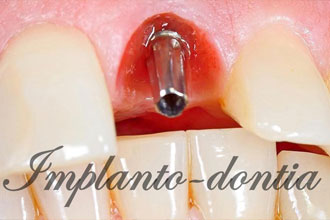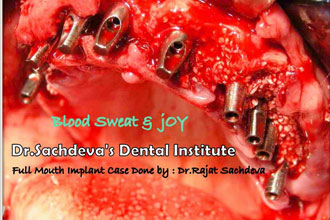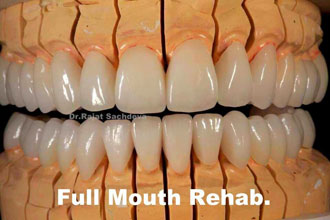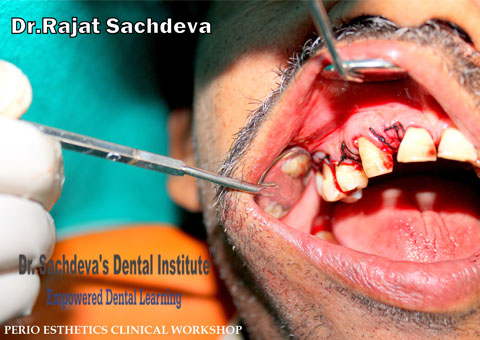Apicectomy
Ask a Question to Our Dentist
Apicectomy
Here at Sachdeva's Dental Aesthetic & Implant Center we often help people who are suffering from root canal treatment issues. If you have any pain or your face or gum is swollen around a tooth that has already had some root canal treatment, then call us now and we will be able to you help you.
It often starts with a pimple (it’s also called a fistula) that will come and go. If you notice that there is pus draining from this pimple, you may well have a root canal problem.
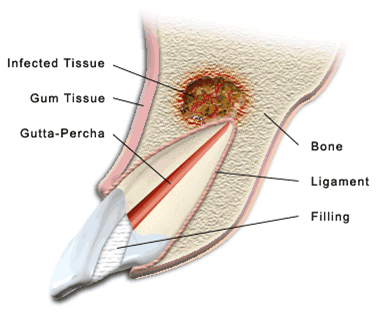
The Problem
An infection has occurred at the tip of the root or roots of a tooth, spreading into the surrounding bone that supports the tooth. Occasionally people may be unaware of the problem but usually there is discomfort, episodes of swelling, gumboils or bad taste.
Why do I need Treatment?
If left untreated the infection will spread possibly developing into an abscess or cyst, or damaging bone around nearby teeth. The tooth may become loose. The infection cannot be cured with antibiotics, but they are often used to give temporary relief of symptoms.
What is the Treatment?
An apicectomy is a small surgical procedure designed to cure an infection at the tip of the root or roots of a tooth. It is indicated when, for a variety of reasons, it has proved impossible for your dentist to cure the infection by removing the dead nerve and placing a root filling.
It is carried out under local anaesthetic (injection into the gum).
What can I expect after the operation?
As the local anaesthetic wears off a few hours after surgery there may be some discomfort but this is quite variable. This is usually managed with a single dose of an analgesic such as Ibuprofen. Antibiotics may also be prescribed. Analgesics are seldom required after the first day. Some swelling at the operation site and sometimes overlying skin is normal. This is worse 24-48 Hours after the operation and resolves over the next few days. It is important to keep the site of surgery as clean as possible. The area can be brushed gently with a toothbrush softened in hot water, together with hot salty mouthwash (teaspoon of salt in a beaker of warm water), 2-3 times a day, beginning the day after surgery and continuing for 1 week.
What are the possible problems?
Prolonged bleeding is rare but if it occurs pressure with a cotton handkerchief or swab for at least 10 minutes usually stops it. The operation is occasionally unsuccessful at removing the infection. If unsuccessful after 2 attempts the tooth is probably better removed.
Call us if you would like to book an appointment to see the dentist about your root canal treatment or gum issue.
Frenectomy
A frenulum is a connective piece of tissue that stops an organ from moving. For example, a frenulum is connected from your upper lip to your gums There is another frenulum that attaches your lower lip to your gums. In some cases the frenulum is either too short or too thick to allow for normal development and may need corrective action.
If you are suffering from your tongue or your lip being attached to soft tissue in your mouth, you may be in need of a frenectomy.
Frenectomys may be needed by children or adults and it’s a procedure that is used to remove soft tissue that may be restricting the movement of your tongue or lips.
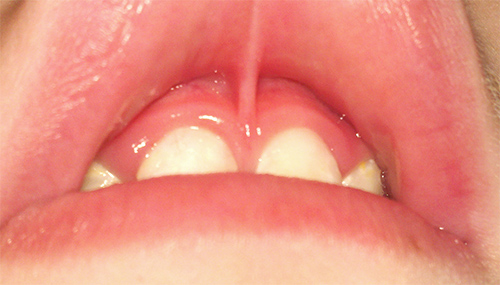
What happens in a frenectomy?
In the case of the lingual frenectomy, the procedure involves the surgical removal any soft tissue that may be restricting the movement of the tongue. Without this procedure, some people have difficulty eating and speaking. It may also be difficult to swallow and it could affect the development of the upper jaw in children. If left without treatment, children may need orthodontic treatment later on in life.
The treatment itself is done very quickly within just 15 minutes. These days a frenectomy can be performed with a laser, which will enable faster healing than in the more traditional manner.
Labial frenectomy is the removal of soft tissue that is connected to the tips. Quite often patients who are undergoing treatment for periodontal disease or treatment for orthodontic (teeth straightening) or dentures may require this procedure.
It’s also possible that a frenectomy is required to remove soft tissue that is connected to the tissue between two teeth (gingival). Without this procedure being performed, it’s possible that there will be a large gap between the front teeth. Or there could be gum recession.
See More Images
Read Morelatest Posts
Stay up to date with all our latest news and launches.
